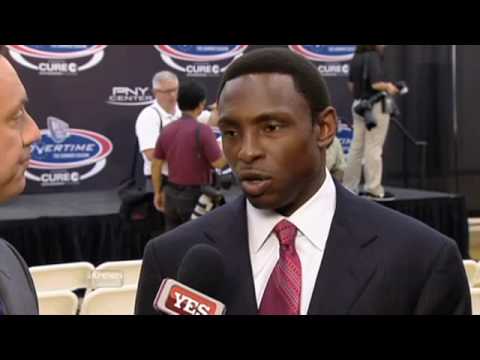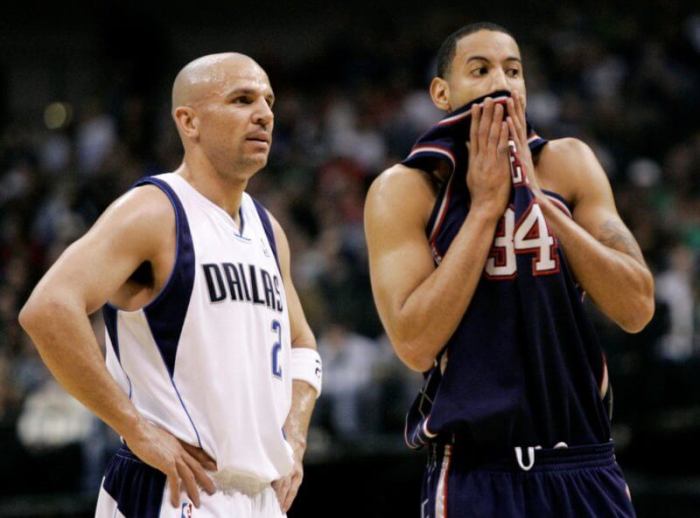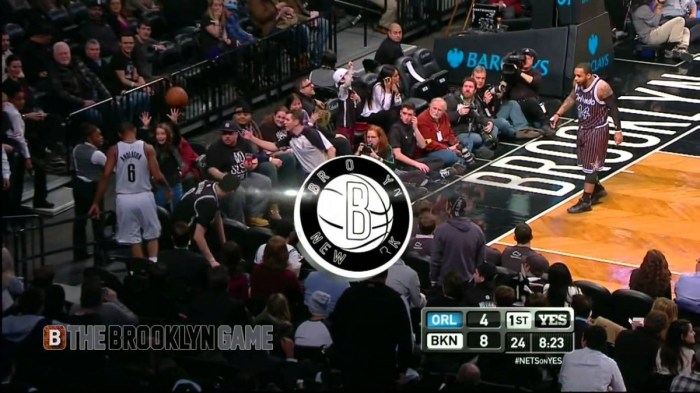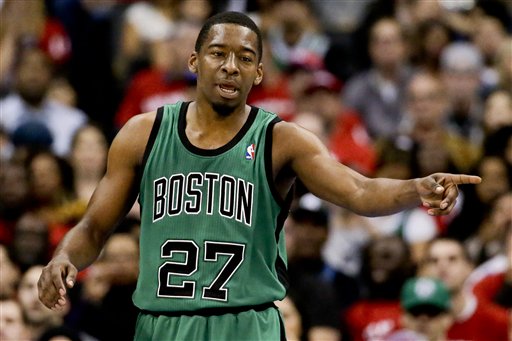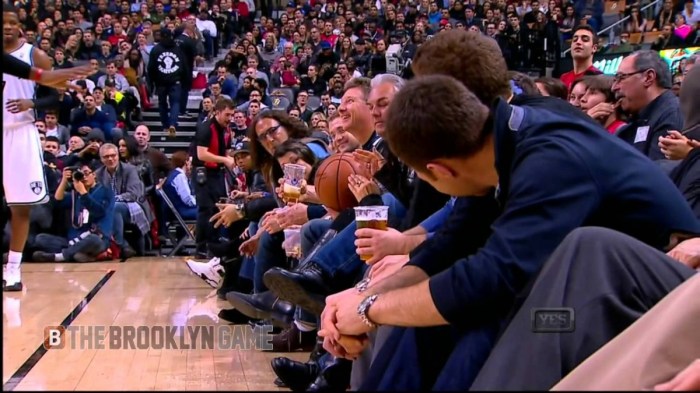After Avery Johnson was introduced as the Nets’ head coach, he did a brief interview for the YES Network. One thing he said especially caught my attention when asked about getting his players to buy-in and play defense (around the 4:00 mark):
“More than anything, we are going to have a system. The system is going to be laid out from game one. How we play pick and rolls. How we function in transition defense. How we close out, and how we play the post. There isn’t going to be a gray area.”
I thought it would be fun to look at a few Mavs games from when Avery was coaching them to see what that system is and if the Nets have the players to execute. We are going to look at a different aspect that Avery mentioned every week, and today we are starting with maybe the most important part of defense in this era of the NBA, the pick and roll defense.
The Pick And Roll
From what I watched, it seemed that the Mavs had two ways to defend the screen and roll. They play it one way when the ball handler is a shooting threat and another way when the ball handler isn’t a threat shooting the basketball.
Non-shooter

So Leandro Barbosa is handling the ball and gets a screen from Shawn Marion. Here, the Mavs don’t consider Barbosa a shooting threat, so they are going to go under the screen. It isn’t as simple as that though. To make it easier to get under the screen and to the other side, preventing the penetration, Dirk needs to do some work here. Dirk takes a few steps back, creating a lane for Devin Harris to bust through.

This frees up the lane for Devin, and he is able to cut off Barbosa’s penetration to the basket.
Shooter

Now, on the next PNR we are looking at, the Mavs are defending Steve Nash. Nash is someone who the Mavericks’ coaching staff has identified as a shooter. Because of that, Jason Terry is going to go over the screen, ready to challenge Nash’s shot if he were to pull up. With Terry going over the screen, Dirk needs to hedge to prevent Nash from getting to the hoop.

Nash gets around the screen, and Dirk challenges him. This is where another Mavs’ PNR rule shows itself. Instead of Terry scrambling to get back, he realizes the best bet for the defense is for him to just switch to Shawn Marion. The Mavs do a lot of this, having a big man show and then if the defender getting screened can’t get back in time. They also look for any opportunity to switch back when they get a chance to try and minimize the mismatch.

Here, Nash is forced to kick it out and Shawn Marion pulls up for a tough jumper.

And now the rebound. As Nets fans probably realized last year, the possession isn’t over until the defense gets the rebound. The Nets were awful on the defensive boards, but I noticed something the Mavs did that can help with the Nets defensive rebounding. They like to gang rebound. If you notice here, the Mavs send four guys to the defensive board. The strategy here is that Devin Harris is quick enough to start a break no matter where he is on the court, so he crashes the boards to help get the rebound.
Full Rotations
Now, lets take another look at a PNR defensive possession so we can see the full defensive rotations and see how they work.

Again, it is Steve Nash running the point, so the Mavs execute their PNR defensive strategy. Devin Harris goes overtop the screen with Dirk coming out to hedge.

However, instead of a pick and pop (like the last possession) the screener, Boris Diaw, rolls to the hoop. This is the biggest weakness for the way the Mavs defend the PNR, but it can be stopped. The key is the weakside defender, in this case it is Josh Howard. Josh Howard needs to sink into the middle of the lane to prevent the roller from making the catch and finishing at the rim.

In theory, it works but here it didn’t because Josh Howard didn’t come to the middle enough, allowing a lane to the basket. Here, Howard didn’t trust his rotations as he was afraid to come too far off of his man. That is something that can’t happen when defending the PNR. Here, Howard should have trusted the rotations and dove into the middle to prevent the lay-up.
Will This Work With The Nets
Without considering the Nets’ roster, I like this style of PNR defense. It prevents the offense from getting the basket directly off the screen by trying to corral the ball handler. It puts the offense in a situation where they have to make passes to get a shot off, and the more passes that take place, the easier it is to rotate and the better chance that the defense has to create turnovers.
With that being said, will this work with the Nets? I think so. Looking at the Nets’ roster, you have a lot of players who seem like they should be able to defend the PNR effectively. Unfortunately, we all know that isn’t how it worked out last year. In my opinion, it all came down to the system, or lack thereof. The Nets were never on the same page when defending the pick and roll. One time down the court, Brook Lopez would hedge effectively, but the rotation wouldn’t happen. The next time down the court, Brook Lopez wouldn’t hedge because he got burned last time, and then the ball handler gets to the basket easily.
With Avery’s system in place, I think the Nets could be effective at stopping the PNR. What I really like is that the Nets have a lot of athletic wings on their roster (Terrence Williams/CDR ?/Courtney Lee/Whoever we add) that really work when it comes to that late in the possession rotation.

